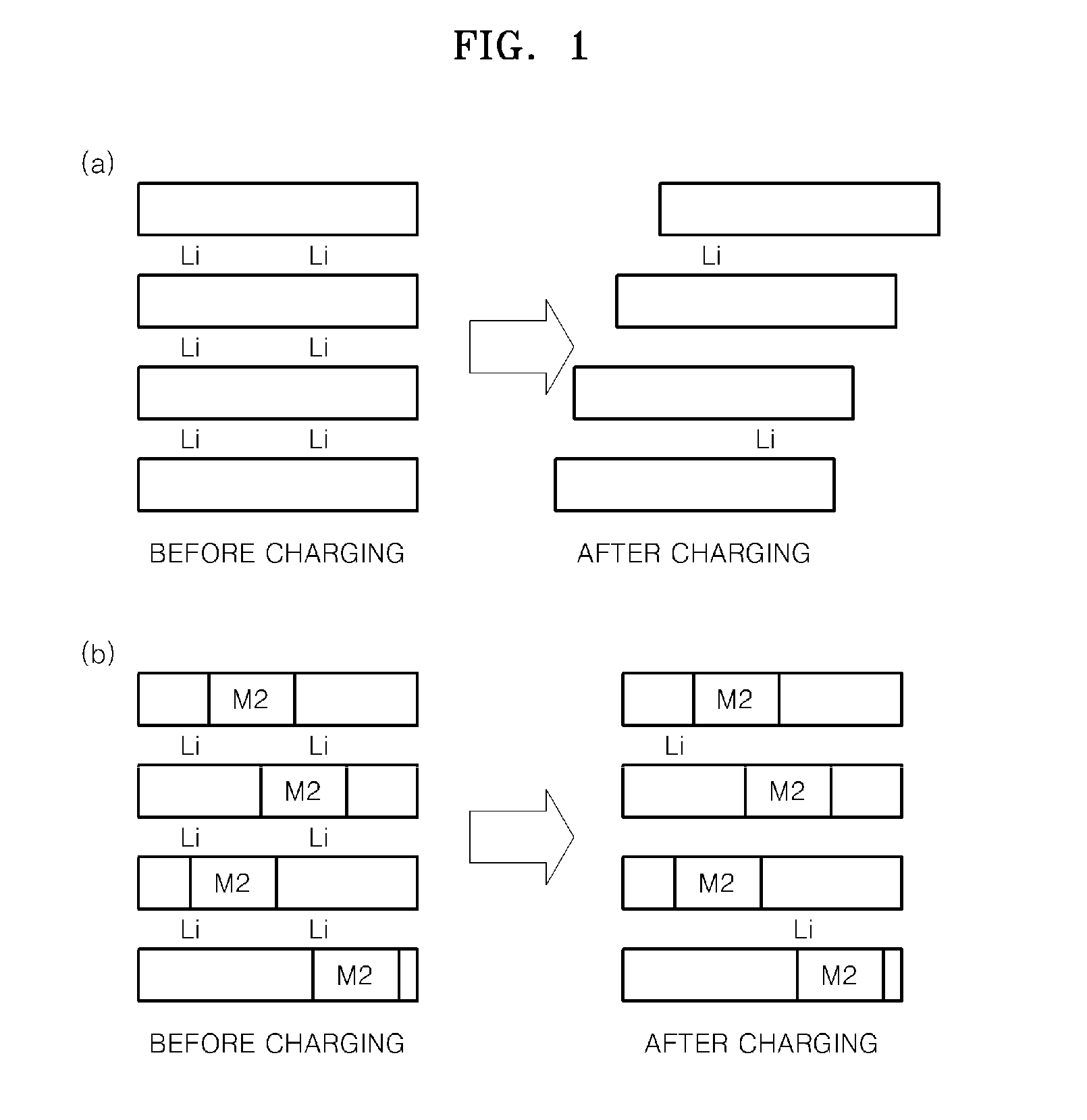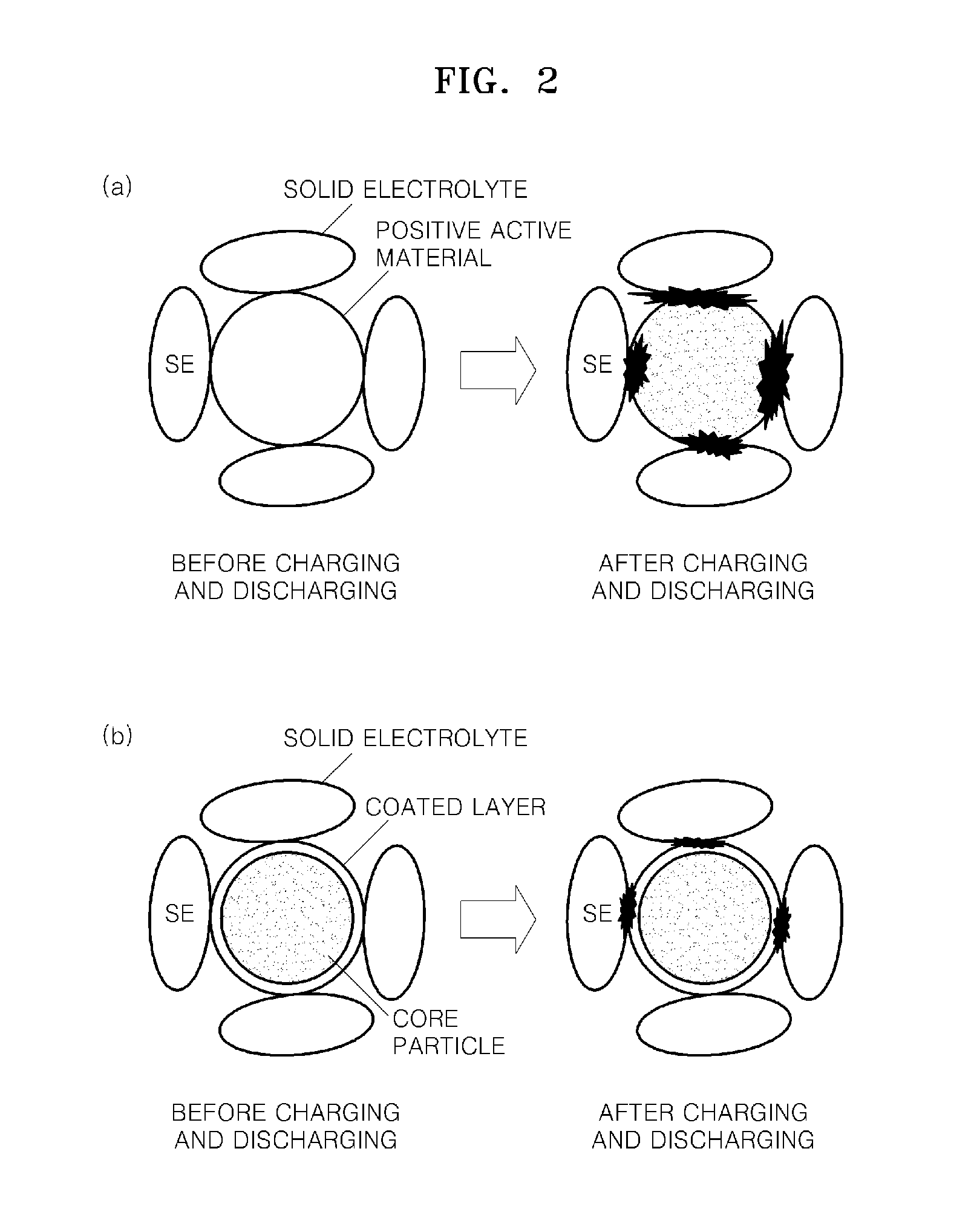All-solid lithium ion secondary battery and electrode therefor
a lithium ion secondary battery and all-solid technology, applied in the direction of non-aqueous electrolyte cells, cell components, electrochemical generators, etc., can solve the problems of insufficient output power of solid lithium ion secondary batteries and the end of serious distortion of their structure, so as to suppress the opportunity for interfacial reaction
- Summary
- Abstract
- Description
- Claims
- Application Information
AI Technical Summary
Benefits of technology
Problems solved by technology
Method used
Image
Examples
example 1
[0055]Layered lithium composite oxide particles of LiNi0.8Co0.15Al0.05O2 were dispersed in ethanol to obtain a slurry. A solution of aluminum (Al) isopropoxide dissolved in ethanol was added to the slurry until about 0.1 wt % of Al was added with respect to the total weight of the layered lithium composite oxide. Ethanol was evaporated from the mixture at about 100° C. and the resulting product was thermally treated at about 120° C. for about 6 hours to obtain a positive active material.
[0056]A mixture of the positive active material, amorphous Li2S—P2S5 (80-20 mol %), and vapor grown carbon fibers (VGCF) in a weight ratio of 60:35:5 was used as a positive electrode composition. A mixture of graphite and amorphous Li2S—P2S5 (80-20 mol %) at a weight ratio of 60:40 was used as a negative electrode composition. Amorphous Li2S—P2S5 (80-20 mol %) synthesized by mechanical milling was used as a material for forming a solid electrolyte. The positive electrode composition, the material for...
example 2
[0057]A solid lithium ion secondary battery was manufactured in the same manner as in Example 1, except that ethanol was evaporated at 60° C. in preparing the positive active material.
example 3
[0058]A solid lithium ion secondary battery was manufactured in the same manner as in Example 1, except that the thermal treatment was performed at about 300° C. for about 1 hour.
PUM
 Login to View More
Login to View More Abstract
Description
Claims
Application Information
 Login to View More
Login to View More - R&D
- Intellectual Property
- Life Sciences
- Materials
- Tech Scout
- Unparalleled Data Quality
- Higher Quality Content
- 60% Fewer Hallucinations
Browse by: Latest US Patents, China's latest patents, Technical Efficacy Thesaurus, Application Domain, Technology Topic, Popular Technical Reports.
© 2025 PatSnap. All rights reserved.Legal|Privacy policy|Modern Slavery Act Transparency Statement|Sitemap|About US| Contact US: help@patsnap.com



